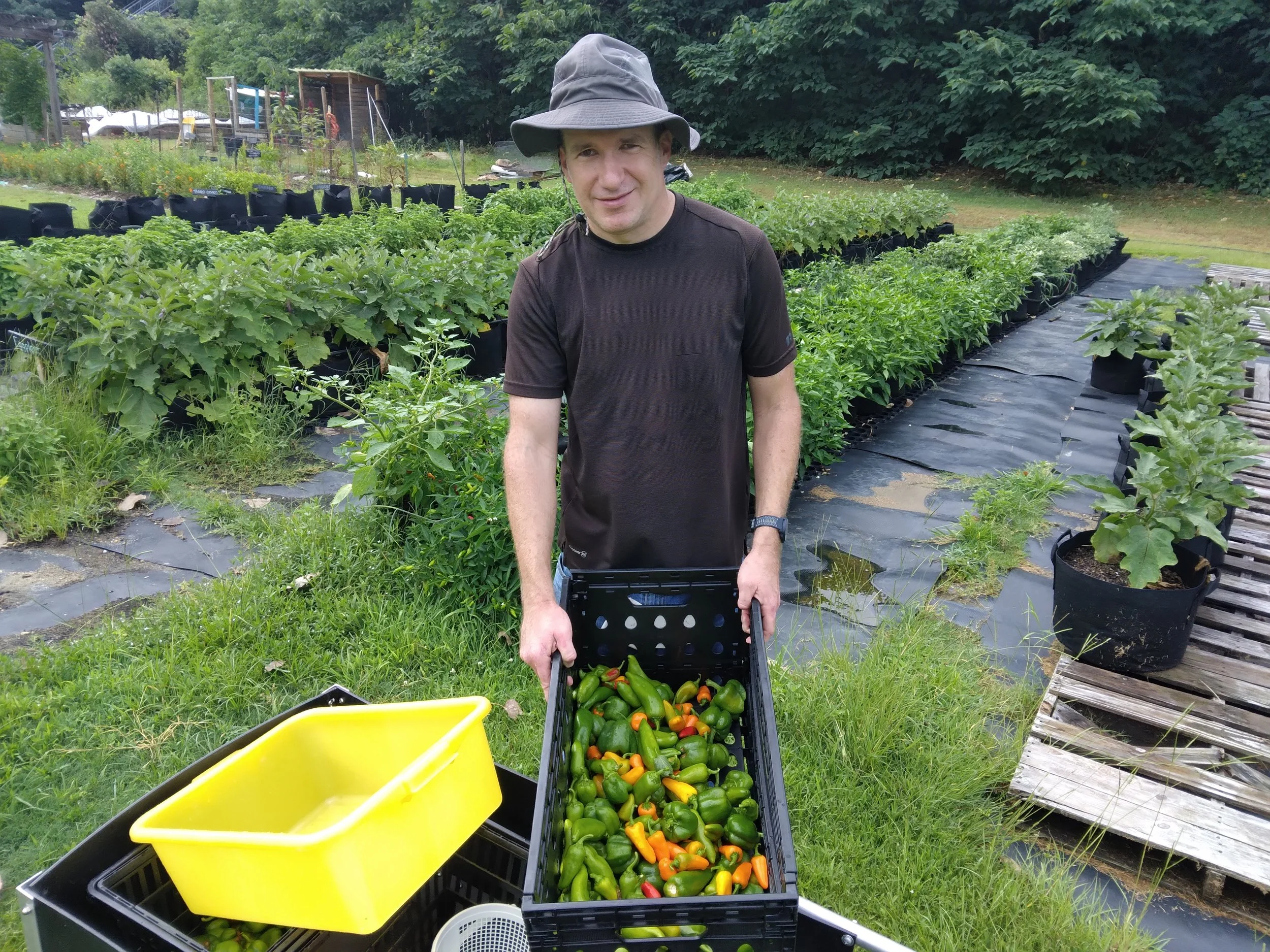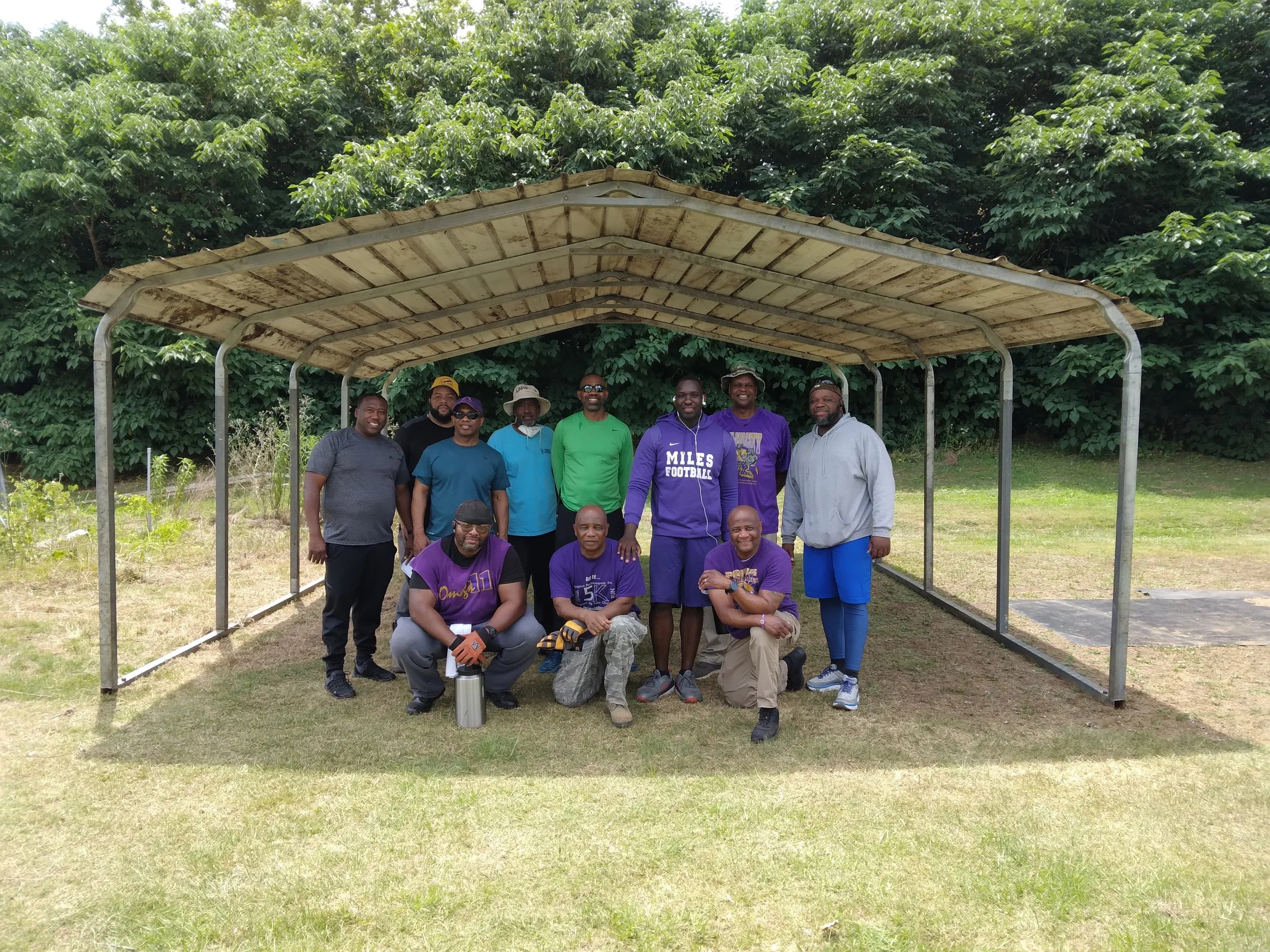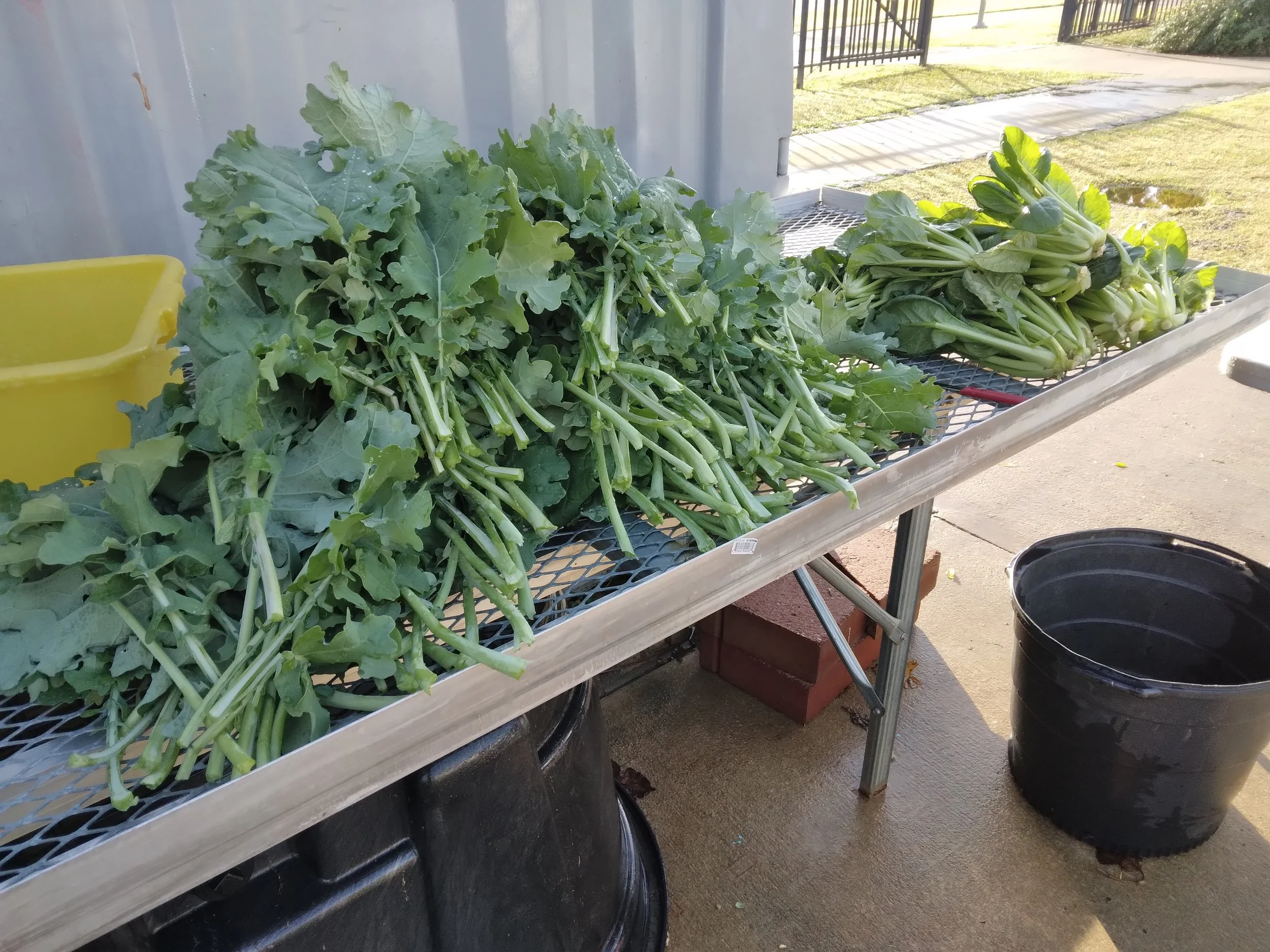2022 in Review
Alan harvested peppers (and a lot of the 1500 lbs of produce we harvested this year) volunteering every Wednesday for our Community Harvests.
For your farmers, 2022 began with a whole lot of joy and a pretty large dollop of fear. Farmer Amanda became the mother of twins and Farmer Caylor had breast cancer surgery. We don’t usually share our personal lives in the farm blog, but this year, instead of focusing on the farm, your farmers were learning to be mothers and cancer survivors.
So to kick off this 2022 year in review, we want to express a lot of gratitude to Alan, Tara, Tricia, Sara, Mr. Bibb and others who showed up every day for several weeks to feed the animals and keep everything going.
Our People
Volunteers are central to everything we do at E.A.T. South. Individuals and families show up weekly to weed, water (Jena!), plant, string trim (thanks Billie!), and take care of the animals on Sundays (thank you Audrey, the Brimmers, and Sara!). Volunteers from Maxwell Air Force Base, Alabama State University, Omega Psi Phi Fraternity, Bridge Builders, Alabama Christian Academy, Boy Scouts of America, St. James School and others help us tackle bigger projects like filling pots in the container garden, building new structures & repairing old ones, and so much more.
Volunteers from the Iota Iota Chapter of Omega Psi Phi helped us build extra storage which allowed us to start construction on the shipping container.
Two organizations continue to be central to our year’s programs: Capital City Master Gardeners and Tuskegee University’s Carver Integrative Sustainability Center. Montgomery’s Master Gardeners plan, plant, and maintain two vegetable demonstration beds along with helping weed and maintain the rest of the farm. Master Gardener Henry Lucas taught the year’s most popular workshop on square foot gardening. Stop by the farm today to see the fall/winter square foot garden.
Over the summer, five students from Tuskegee University’s internship program survived the hottest June we’ve seen in a while and spent a significant amount of time just keeping things watered! Their summer research projects helped us plan for farm expansion. Industrial Design Major Andrew simplified our shipping container design as building costs skyrocketed and created a design for a volunteer tool shed. Animal Sciences Major Deraja created budgets and plans to help us add new livestock to the farm.
Tuskegee Interns Phoenix and Andrew bravely begin construction on the shipping container in July!
Anyone can visit E.A.T. South any time the gates are open. Think of us as a park, farm and outdoor classroom. On average, three hundred people a month stop by for programs or just to ask what we’re doing. In the spring, we counted more than 600 visitors a month! People drop by from down the street or from as far away as New Zealand curious about what we’re up to.
Children in our after school program get ready to plant for spring.
Programs
While covid is definitely with us still, we were so excited to restart educational programs in January with a seed starting class. We hosted our fourth annual Seedy Saturday Seed Swap (in person this time!!!) in February, and organized workshops on everything from mushroom growing to seed starting to organic gardening to fall gardening.
Our students from Montgomery’s community centers returned in March. Children from three centers spent eight weeks in the spring planting, harvesting and exploring the garden. In the fall, they taste tested new snack recipes and took the recipes and produce home to share with their families. Four Community Centers joined us for summer camp in June, and students from the Therapeutic Recreation Center returned for monthly garden classes.
Fall greens washed and heading to a local food pantry.
We’ve talked about classes and youth programs, and volunteer projects. What about the food?!!! As an urban teaching farm, E.A.T. South exists to educate about good food, and we grow more than sixty varieties of edible plants a year. Youth in the after school program harvest vegetables for snacks, students from the Therapeutic Recreation Center took home crates of sweet potatoes they harvested. Volunteers usually take home vegetables or plants depending on the time of year. The bulk of the food we grow - around 1500 lbs at this moment - is shared with local food pantries and the Montgomery Area Council on the Aging through our Community Harvest Program.
New Projects & Adventures
Students on a field trip use flowers from the dye garden to dye paper.
Sometime at the beginning of the year, our neighbor Tara asked if we’d ever grown plants for dying fabric or paper. That question kicked off a year of growing and learning about new plants in our dye garden. The dye garden is the one place where we grow things in the ground. Because our soil is contaminated with arsenic, everything we grow to eat is in a container, but growing plants for dye (and cut flowers and pollinators) allows us to teach new skills while using more of our space. Expect more dye and craft related workshops next year!
Thanks for hanging in there for our year in review. We are proud of what we’ve accomplished, and we invite you to get involved through volunteering, workshops, and/or a financial contribution. We are a small organization that gets a lot done, and your contribution will help the gardens and programs grow.





